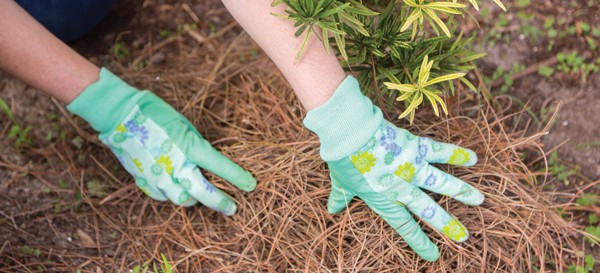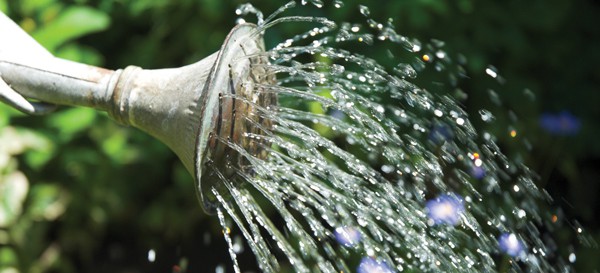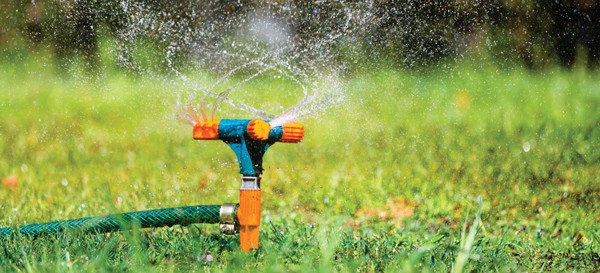Reduce your water bill and conserve resources with savvy watering practices.

You don’t have to sacrifice beauty to save water in the landscape. With simple management practices and efficient use of water, homeowners can reduce water usage while maintaining attractive and healthy lawns and landscapes. And some of the most effective techniques for conserving water in the landscape are also the most affordable. Follow these tips to make the most of every drop.
1. Mulch Trees and Garden Beds

In addition to beautifying the landscape, mulch provides numerous services in the garden, from managing weeds to controlling soil erosion. When it comes to water, mulch reduces evaporation and works to retain soil moisture. Wood, pine straw, and other plant-based mulches also add organic material to the garden over time, which help improve the water-holding capacity of soils.
2. Water Deeply, Not Frequently
Think slow and deep when irrigating lawns and gardens. When water is applied too quickly, much is lost to runoff. Irrigating slowly allows water to soak into the ground. Drip irrigation is excellent for this purpose, but lowering the water flow to sprinklers also works. Allow irrigation to run long enough to wet soils to a depth of six inches. Deep irrigation encourages healthier root systems. Watering too frequently and too shallow encourages shallow root systems that are more susceptible to drought. Reduce the frequency of watering, allowing soils to dry between watering. Finally, adjust irrigation according to plant age. Older plants have deeper, more extensive root systems and often require less frequent irrigation.
3. Reduce Run-Off

Runoff from the landscape not only wastes water but can also be a source of pollution to natural waterways, as runoff carries soil particles and lawn chemicals to streams and lakes. By preventing run-off, gardeners keep water in the landscape, where it can be used by plants. Run-off occurs when water is applied too heavily, either by natural rainfall or irrigation practices. Water flowing over impervious surfaces such as driveways and sidewalks is another common source of runoff from residential landscapes. You can reduce run-off by:
- Aligning sprinkler heads to avoid irrigating roads, sidewalks, and driveways.
- Using drip irrigation and other low volume delivery systems to irrigate slowly.
- Building rain gardens to trap water on slopes and harvesting rainwater from downspouts.
- Direct downspouts to empty into the landscape rather than the street or other hard surfaces.
- Replace concrete walkways and other hard surfaces with pervious paving or mulch to allow water infiltration.
4. Maintain Sprinklers and Irrigation Systems
We all know how much water a leaking toilet can waste. In the landscape, leaky faucets and broken sprinkler heads can also waste huge amounts of water. Taking time to periodically check irrigation equipment and connections can save a lot of money on your water bill. Look for leaks and broken, buried, or jammed sprinkler heads. Traditional hose connections at the faucet and sprinkler can also leak and are easily repaired.
5. Get Smart Technology
If you are using an irrigation system, consider upgrading to a “smart” controller or installing a rain sensor. Smart water controllers measure weather and soil moisture conditions to automatically adjust watering schedules according to landscape conditions. Rain sensors are inexpensive and can be retrofitted to most irrigations systems. Adjust irrigation systems for current conditions. Try to avoid the habit of “set it and forget it,” as plant needs change throughout the year.
Whether you are tech-savvy or traditional, these simple management practices will save you money in landscape maintenance, while conserving and protecting this finite resource.

